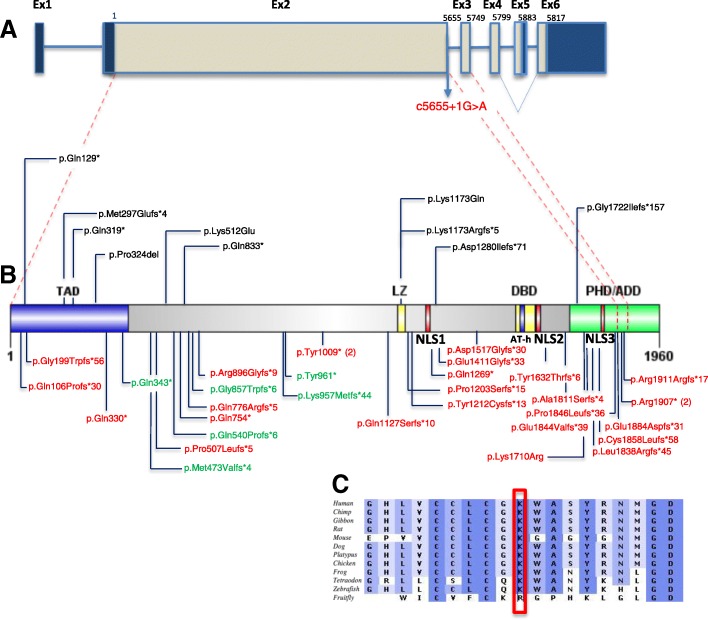Fig. 1.
TCF20 gene, protein domain structure, and location of mutations. a Schematic representation of TCF20, exons are shown to scale with the coding sequence in gray and untranslated regions in dark blue. There is an in frame stop codon in the alternatively spliced exon 5 generating a shorter isoform (referred as isoform 2) (Genbank: NM_181492.2) lacking exon 5 in the 3′ coding region. The position of the first coding nucleotide is shown in exon 2, numbers above boxes indicate cDNA numbering at last nucleotides of exon boundaries or last nucleotide of stop codons. Red dashed lines show the exon boundaries relative to the amino acid position shown in b. b Domain structures of TCF20 with the mutations currently identified. Protein domains are indicated above or below the structure. Abbreviations as follows: TAD, transactivation domain; NLS, nuclear localization signals; LZ, leucine zipper; DBD, DNA-binding domain; AT-h, AT-hook domain; PHD/ADD, Plant Homeodomain/ADD. In red and below the protein structure are the mutations identified in this study. In black and above the protein structure are the mutations previously reported (see text). All the de novo SNVs detected in anonymized subjects presenting with mild to severe neurodevelopmental disorder from our cohort are represented in green and located below the protein structure. All the mutations occur before the last exon of TCF20. In parentheses are indicated the number of times the recurring variants are observed. c ClustalW multi-species alignment obtained with Alamut software of the region containing Lys1710Arg showing the high level of conservation of the mutated residue. Intensities of shades of blue are proportional to the degree of cross-species conservation

